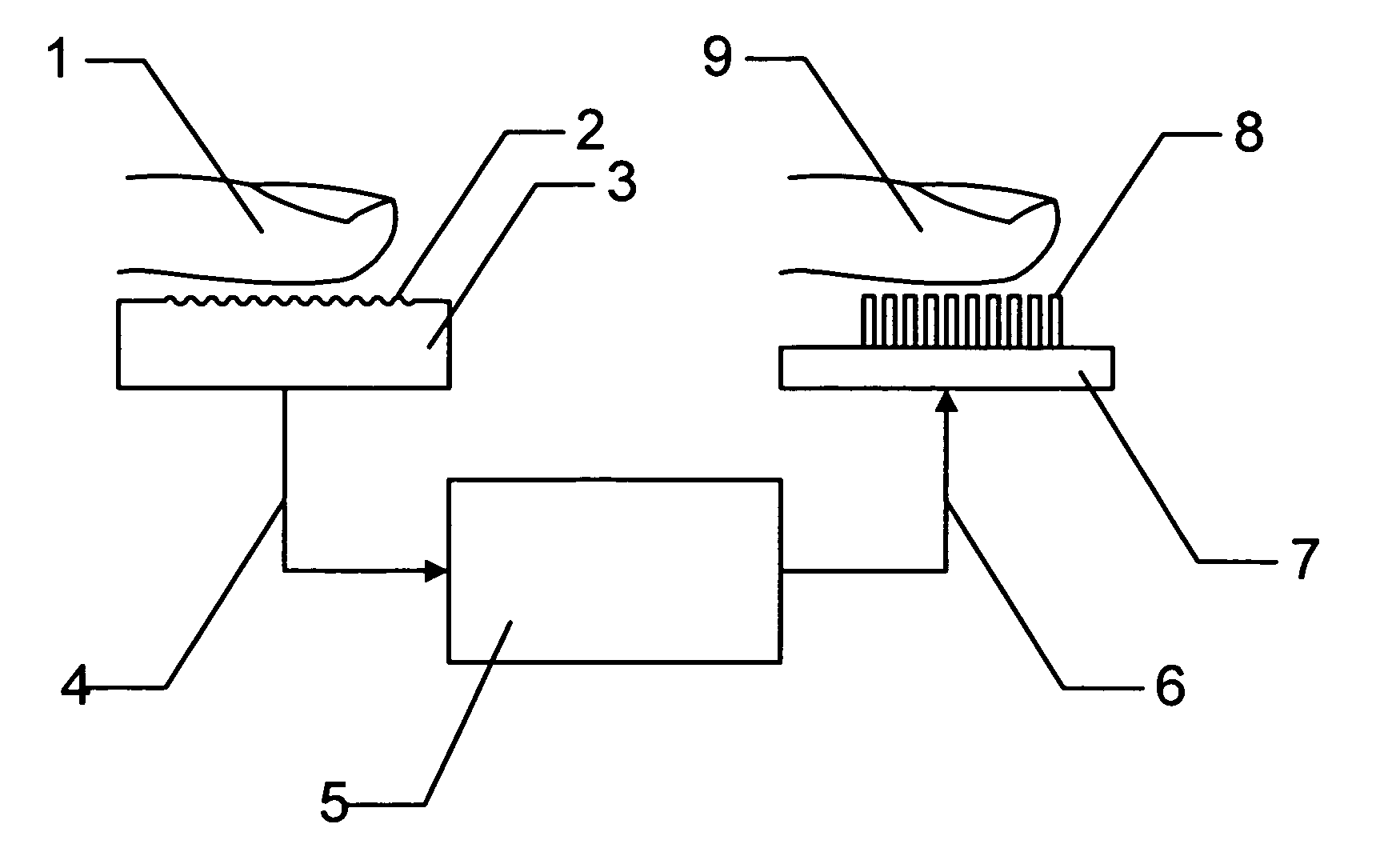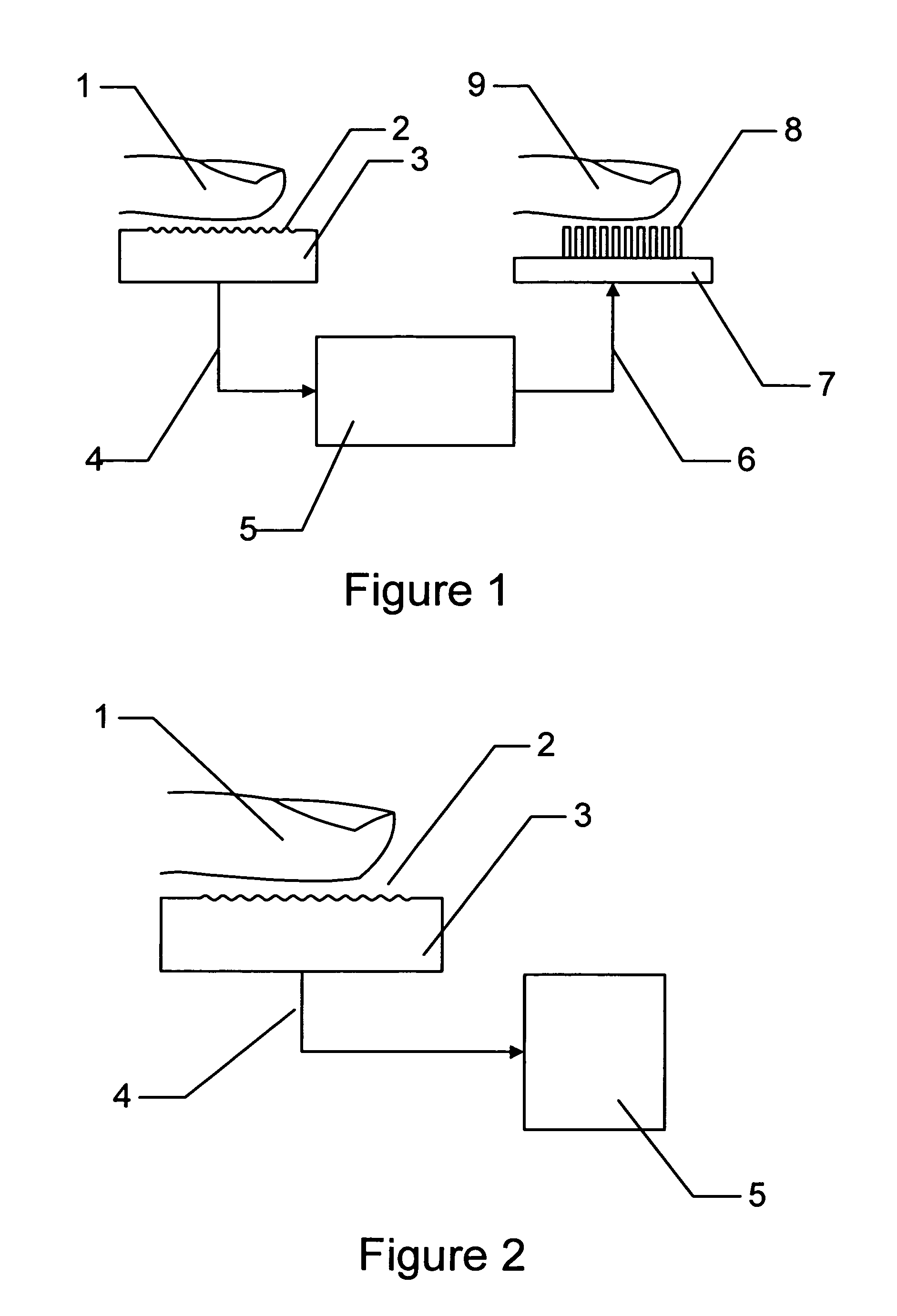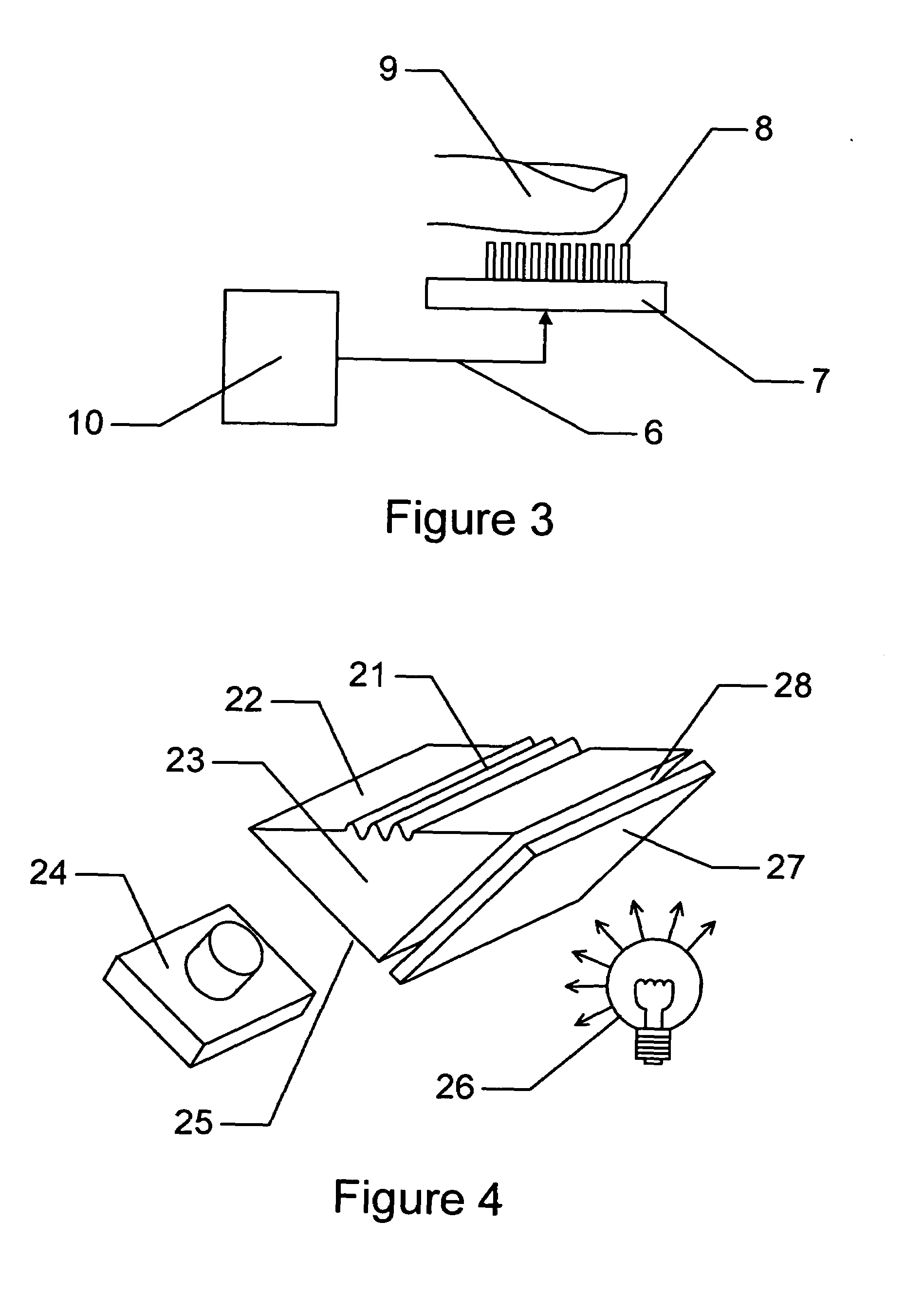Apparatus to reproduce tactile sensations
a technology of tactile sensations and apparatus, applied in the field of apparatus to reproduce tactile sensations, can solve the problems of difficult and laborious construction of devices which accomplish the same function as the skin, and the current state of the art is limited
- Summary
- Abstract
- Description
- Claims
- Application Information
AI Technical Summary
Benefits of technology
Problems solved by technology
Method used
Image
Examples
Embodiment Construction
[0054]With reference to FIG. 1 there is provided a skin deformation recording unit 3 which incorporates a surface 2 contacting a first finger 1 touching and possibly sliding on the surface 2. The surface 2 may be flat or endowed with features. Unit 3 produces signals indicative of features associated with the portion of the skin of finger 1 in contact with surface 2. Naturally, when a finger contacts a surface, within certain limits, the surface of the skin of finger 1 will adopt the same shape as that of the surface 2. Hence the skin of finger 1 is deformed from its original shape in order to espouse the shape of the surface 2. It can readily be observed that for a great variety of shapes the skin of a finger reproduces exactly the shape of a contacted surface. This is especially true if the shape of the surface does not change too abruptly and if it is composed of raised features. When these features are recessed or have sharp edges, the contact may not be intimate. However, unit ...
PUM
| Property | Measurement | Unit |
|---|---|---|
| diameter | aaaaa | aaaaa |
| diameter | aaaaa | aaaaa |
| distance | aaaaa | aaaaa |
Abstract
Description
Claims
Application Information
 Login to View More
Login to View More - R&D
- Intellectual Property
- Life Sciences
- Materials
- Tech Scout
- Unparalleled Data Quality
- Higher Quality Content
- 60% Fewer Hallucinations
Browse by: Latest US Patents, China's latest patents, Technical Efficacy Thesaurus, Application Domain, Technology Topic, Popular Technical Reports.
© 2025 PatSnap. All rights reserved.Legal|Privacy policy|Modern Slavery Act Transparency Statement|Sitemap|About US| Contact US: help@patsnap.com



